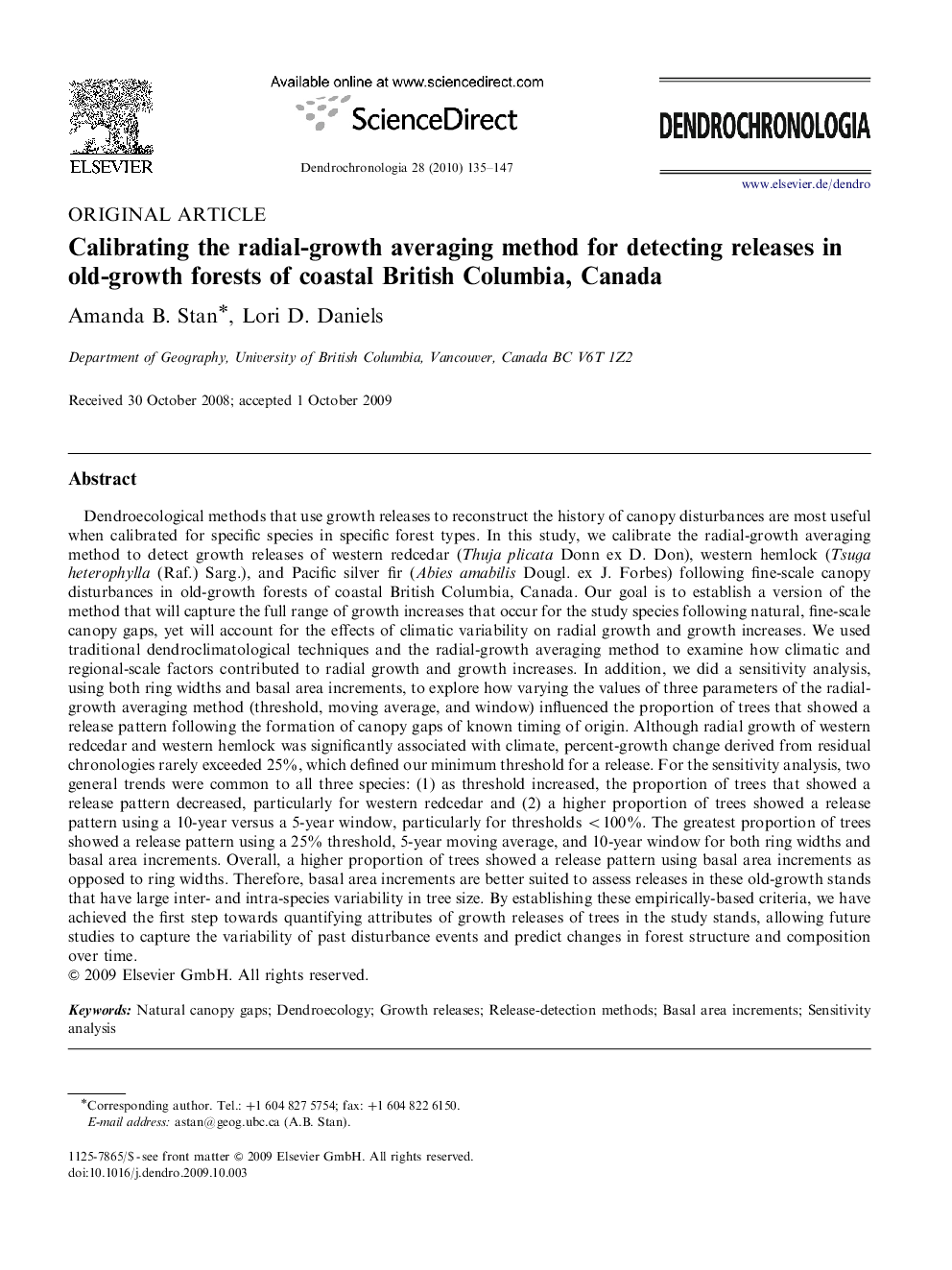| کد مقاله | کد نشریه | سال انتشار | مقاله انگلیسی | نسخه تمام متن |
|---|---|---|---|---|
| 85765 | 159122 | 2010 | 13 صفحه PDF | دانلود رایگان |

Dendroecological methods that use growth releases to reconstruct the history of canopy disturbances are most useful when calibrated for specific species in specific forest types. In this study, we calibrate the radial-growth averaging method to detect growth releases of western redcedar (Thuja plicata Donn ex D. Don), western hemlock (Tsuga heterophylla (Raf.) Sarg.), and Pacific silver fir (Abies amabilis Dougl. ex J. Forbes) following fine-scale canopy disturbances in old-growth forests of coastal British Columbia, Canada. Our goal is to establish a version of the method that will capture the full range of growth increases that occur for the study species following natural, fine-scale canopy gaps, yet will account for the effects of climatic variability on radial growth and growth increases. We used traditional dendroclimatological techniques and the radial-growth averaging method to examine how climatic and regional-scale factors contributed to radial growth and growth increases. In addition, we did a sensitivity analysis, using both ring widths and basal area increments, to explore how varying the values of three parameters of the radial-growth averaging method (threshold, moving average, and window) influenced the proportion of trees that showed a release pattern following the formation of canopy gaps of known timing of origin. Although radial growth of western redcedar and western hemlock was significantly associated with climate, percent-growth change derived from residual chronologies rarely exceeded 25%, which defined our minimum threshold for a release. For the sensitivity analysis, two general trends were common to all three species: (1) as threshold increased, the proportion of trees that showed a release pattern decreased, particularly for western redcedar and (2) a higher proportion of trees showed a release pattern using a 10-year versus a 5-year window, particularly for thresholds <100%. The greatest proportion of trees showed a release pattern using a 25% threshold, 5-year moving average, and 10-year window for both ring widths and basal area increments. Overall, a higher proportion of trees showed a release pattern using basal area increments as opposed to ring widths. Therefore, basal area increments are better suited to assess releases in these old-growth stands that have large inter- and intra-species variability in tree size. By establishing these empirically-based criteria, we have achieved the first step towards quantifying attributes of growth releases of trees in the study stands, allowing future studies to capture the variability of past disturbance events and predict changes in forest structure and composition over time.
Journal: Dendrochronologia - Volume 28, Issue 3, 2010, Pages 135–147